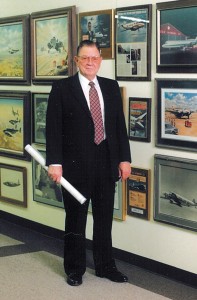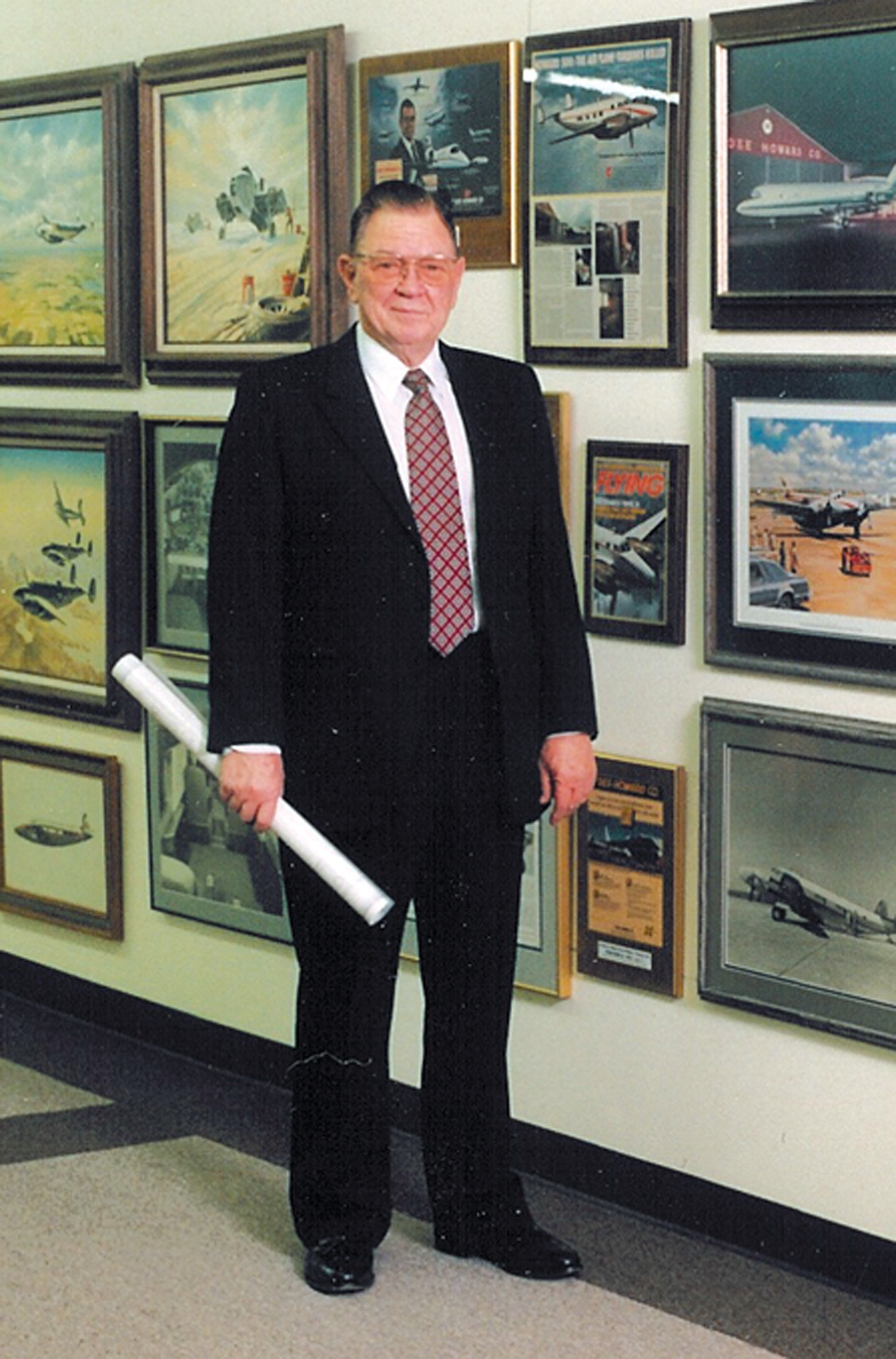 You just can’t stop Dee Howard. His innovative ideas, such as his jet engine thrust reverser design, helped carry the aviation industry forward by leaps and bounds over his 50-year career.
You just can’t stop Dee Howard. His innovative ideas, such as his jet engine thrust reverser design, helped carry the aviation industry forward by leaps and bounds over his 50-year career.
Born in 1920, Howard got his first taste of the aviation world as a teenager when the Works Progress Administration began rebuilding the old terminal at Stinson Field.
“I’d wash and polish airplanes and do all kinds of things for a ride,” he said.
He soon found himself handling baggage for Braniff Airlines in San Antonio.
Shortly after marrying at 18, Howard moved to California. Working for a Glendale Oldsmobile dealer by day, and studying at night, he received his aircraft and engine mechanics license, and landed a job as a junior mechanic with Western Airlines.
Once the war started, he rejoined Braniff in Texas as a mechanic. In 1946, at 26, he joined the newly formed Slick Airways. After the cargo carrier relocated to Burbank, Howard remained in San Antonio to start his own business, Howard Aero, Inc.
With the desire to build a business plane that a man could stand up and walk around in, Howard spied the Lockheed (PV1) Ventura bomber. Howard Aero built more than 100 Super Venturas in the early 1950s. It set the pace for high-performance executive aircraft and the Howard 250, 350 and 500 models followed-—all with an impeccable safety record.
A decade later, Bill Lear came to San Antonio to entice him to build the first Lear Jet mock up. With the industry leaning toward turbine-powered aircraft, Howard sensed his future would somehow embrace jet-powered airframes.
Gambling on the promise, he sold half of his company to a financial backer, surrendering voting control until certain milestones were achieved. Within a year, Howard lost the company he founded. Two years later, Howard Aero filed for bankruptcy.
Down, but not out, Howard founded the Dee Howard Company in 1964, which soon became an industry leader in the emerging business and commercial jet market.
With a number of inventions and supplemental type certificates under its belt, the Dee Howard Company flourished. When the first Lear and Jet Commander business jets were introduced, thrust reversers weren’t available for the CJ610 GE jet engine that was used. Instead, a drag chute was employed for emergency stops. Howard felt the idea wasn’t practical and decided to remedy it by developing the first non-drag chute option for the GE CJ-610 jet engine. The innovation gave the Dee Howard Company a brand new business angle-—thrust reversers.
Howard’s series of successful modifications for Lear-—including the Howard Extended Range Mod—-also advanced the XR Lear Jet performance by achieving extended range at Mach .80.
Although he has since sold his aviation companies, Howard continues to improve the way we travel. A few years ago, he founded River City Products, a company that improves highway safety by making heavy, over-the-road vehicles more directionally stable and less fatiguing to drive.











